About Casini Ranch
|
|
From as early as 4000 BCE Western Sonoma County was the home
of the nomadic Pomo. The Pomo were hunter gatherers that
lived in small groups or bands. Some of the Pomo people remain
in the area today, including the Kashia Band at Stewarts Point
Ranch and the Dry Creek Band in Alexander Valley. Just to the
South of Casini Ranch is Pomo Canyon Campground, named after
the native people who once populated the area. Taking the 12
mile hike from Casini Ranch to Shell beach will take you right
through Pomo Canyon.
|
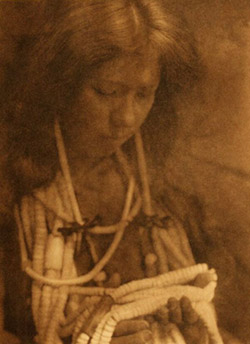
|
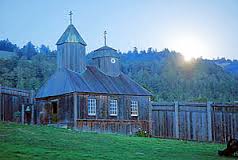
|
Fort Ross was a former Russian establishment along the Sonoma
County coast from 1812 to 1842. The land around Casini Ranch
was used to harvest lumber and grow food for the fort until
the Russians departed the Fort in 1841. Not much of this
period remains in the area around Casini Ranch, however the
fort itself is only 30 minutes away and the drive there presents
some breathtaking views of the Pacific Ocean.
|
|
Duncans Mills Ranchero was part of the Rancho Muniz Mexican Land
Grant given in 1845 by Governor Pio Pico to Manuel Torres.
However, Casini Ranch being on the South side of the river was
part of the Rancho Bodega Mexican Land Grant since the Russian
River was the dividing line between the grants. The Bodega
Ranchero was granted to Esteban Smith in April of 1846. While
the Mexican culture did have influence in Sonoma County it was
held in check to some degree along the coast due to the presence
of the Russian Fort.
|
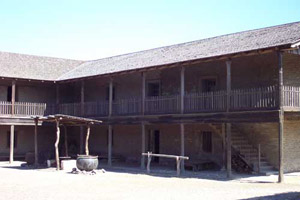
|
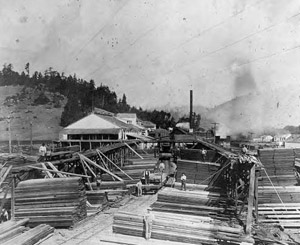
|
Casini Ranch was once the Moscow Mill owned by the Russian River
Land and Lumber Company. In 1889 the Russian River Land and Lumber
Company was the largest owner of timber land in the area with 10,000
acres. Moscow Mill was located South of the mill relocated by the
Duncan Brothers from the Russian River mouth to the location of the
North Pacific Coast Narrow Gauge Railroad Bridge in 1877.
|
|
Two Rail Lines once ran through Duncans Mills. The first was the
North Coast Narrow Gauge rail which came from the south starting
at Sausalito then running through the towns of Point Reyes Station,
along Tomales bay, Tomales, Valley Ford, Freestone, Occidential and
Monte Rio. The Narrow Gauge rail actually went beyond Duncans Mills
and terminated in Cazadero from 1886 to 1933. Evidence of these rail
lines can still be found today, from sections of track that can be
found along Austin Creek (or even on the West beach at Casini Ranch)
to the Four narrow gauge cars are on display in Duncans Mills.
|
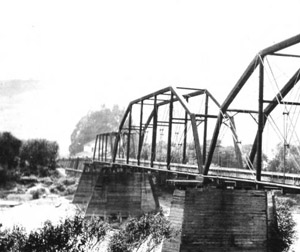
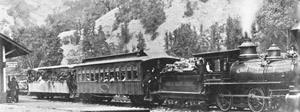
|
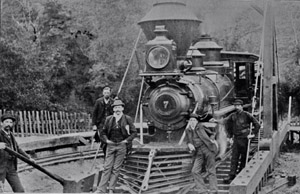
|
In 1911 The Northwest Pacific Standard Gauge rail line reached
Duncans Mills from the East running down the Russian River from
Futon and through Guerneville. Most of the narrow gauge tracks were
converted at that time to standard gauge. The Standard Gauge track
was last used in 1935. Most of the Duncans Mills rail yard used a 3
track rail which allowed both the narrow gauge and standard gauge
trains to use the yard.
|
The Casini Family
The Casini Family have lived on what is now Casini Ranch for four
generations and have owned the land for three generations. In 1881
Bartolomeo and Anastasia Casini settled in the area around Duncanís
Mills, first living in the Freezeout area and then later living at the
European Hotel in Duncanís Mills after the bridge was washed out. Their
son Paul Anthony Casini worked as the dairy manager on the land that is
now Casini Ranch for the La Franchi family who at the time owned the
dairy ranch. Over the period of 1928 to 1932 Paul Anthony Casini would
buy out the La Franchi shares in the dairy and become the sole owner of
what is now Casini Ranch.. Over the next 33 years people visiting the
area would express an interest in going to the river to fish. During
this time Paul Anthony Casini or his son George would grant people access
and allow them to go down to the river. In 1965 George Casini began the
process of turning the 110 acre parcel bounded by the Russian River and
Moscow Road into what is now Casini Ranch Family Campground.
Casini Ranch Family Campground is still owned by the Casini family.
George's son Paul Casini is the chairman of the organization that
oversees the day to day operations of the park.
|







